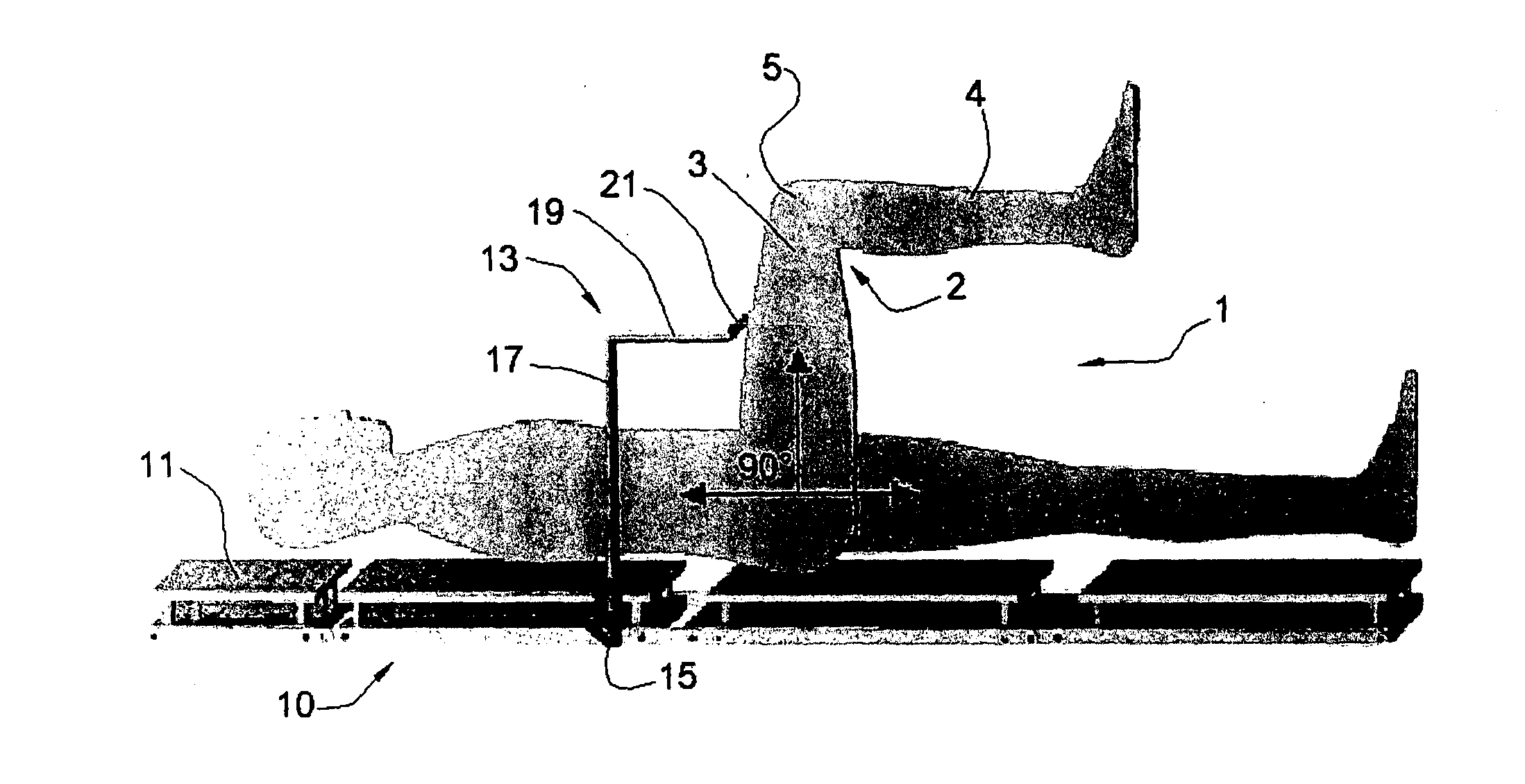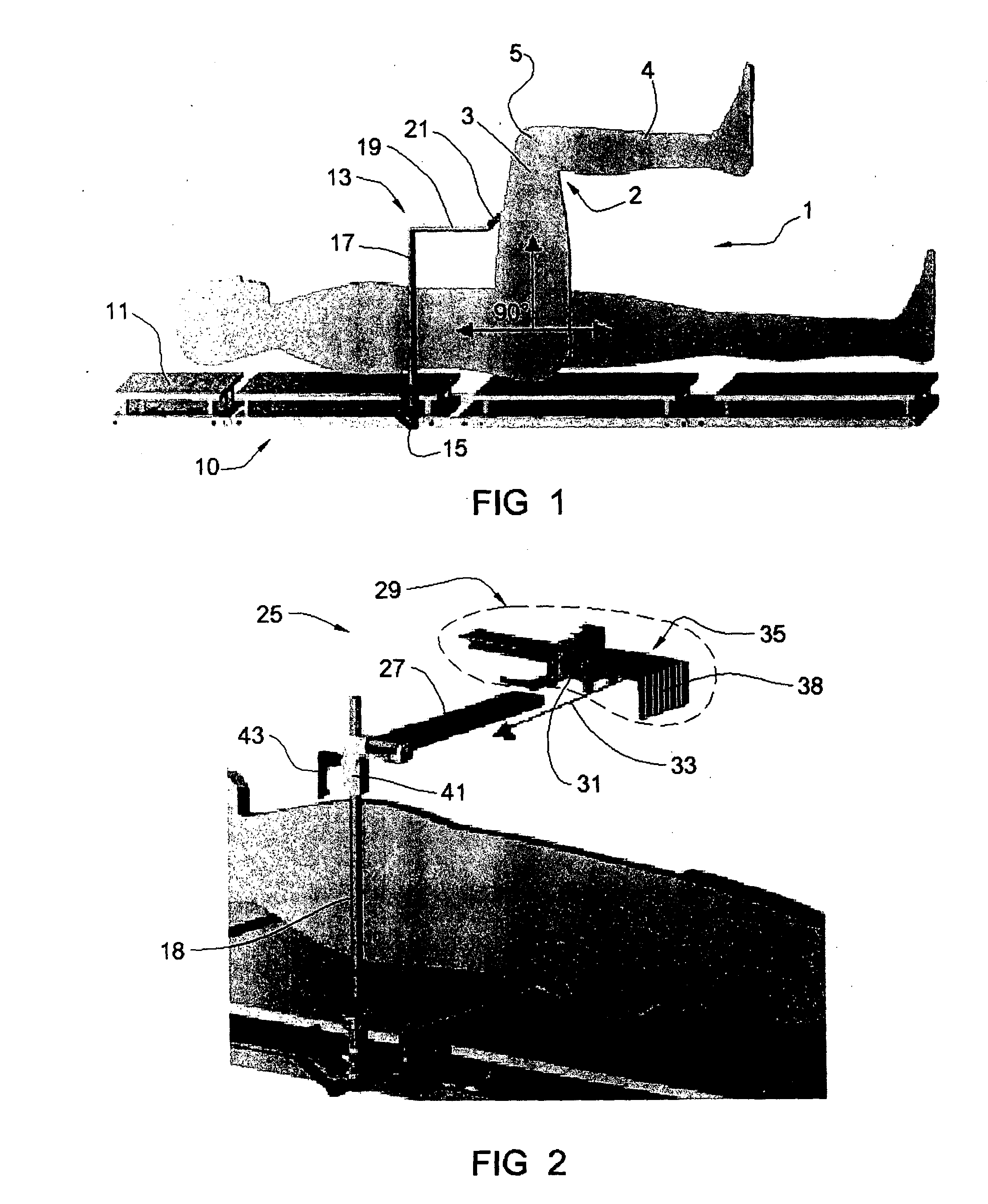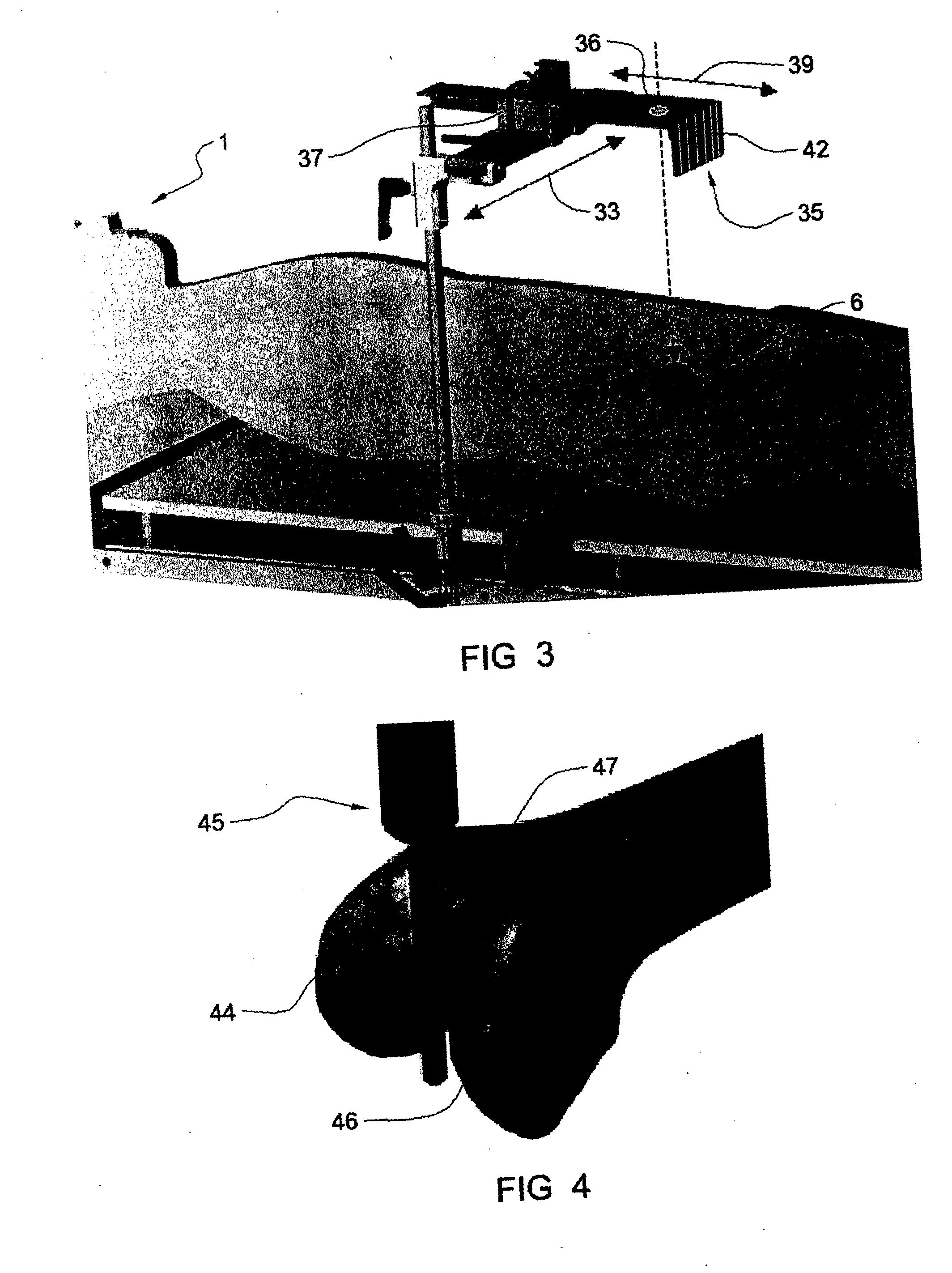Laser triangulation of the femoral head for total knee arthroplasty alignment instruments and surgical method
a technology of femoral head and total knee arthroplasty, which is applied in the field of laser triangulation of femoral head for total knee arthroplasty alignment instruments and surgical methods, can solve the problems of rapid failure of implants, limited discussion, and rapid failure, and achieve the effect of improving the accuracy of resection
- Summary
- Abstract
- Description
- Claims
- Application Information
AI Technical Summary
Benefits of technology
Problems solved by technology
Method used
Image
Examples
Embodiment Construction
Reference is first made to FIGS. 1-3, which depict the initial positioning of a target over the hip of the patient. The patient is designated by the reference numeral 1 and has a leg 2 including an upper leg 3, a lower leg 4, and a knee 5, as well as a hip 6 (FIG. 3). A surgical table 10 has a surface 11 on which the patient 1 is positioned. A non-sterile target positioner 13 includes a non-sterile clamp 15 that is suitably clamped to the table 10, a vertical portion 17, and a horizontal portion 19 from which extends a perpendicular portion 21 designed to engage the patient's thigh when the upper leg 3 is flexed 90 degrees with respect to the patient's body (FIG. 1) and the surgical table, to position the patient on the operating table. Once the patient is properly positioned, the target positioner is removed from the clamp 15, whereupon the laser target system 25 is mounted on the clamp 15 (FIGS. 2-3).
As particularly seen in FIGS. 2 and 3, the laser target system 25 includes a b...
PUM
 Login to View More
Login to View More Abstract
Description
Claims
Application Information
 Login to View More
Login to View More - R&D
- Intellectual Property
- Life Sciences
- Materials
- Tech Scout
- Unparalleled Data Quality
- Higher Quality Content
- 60% Fewer Hallucinations
Browse by: Latest US Patents, China's latest patents, Technical Efficacy Thesaurus, Application Domain, Technology Topic, Popular Technical Reports.
© 2025 PatSnap. All rights reserved.Legal|Privacy policy|Modern Slavery Act Transparency Statement|Sitemap|About US| Contact US: help@patsnap.com



